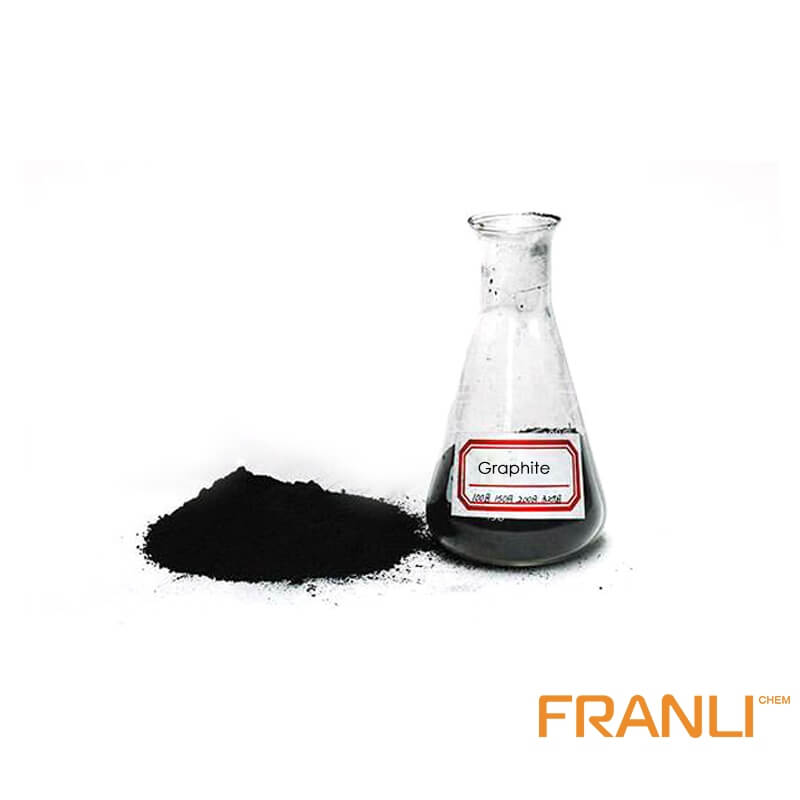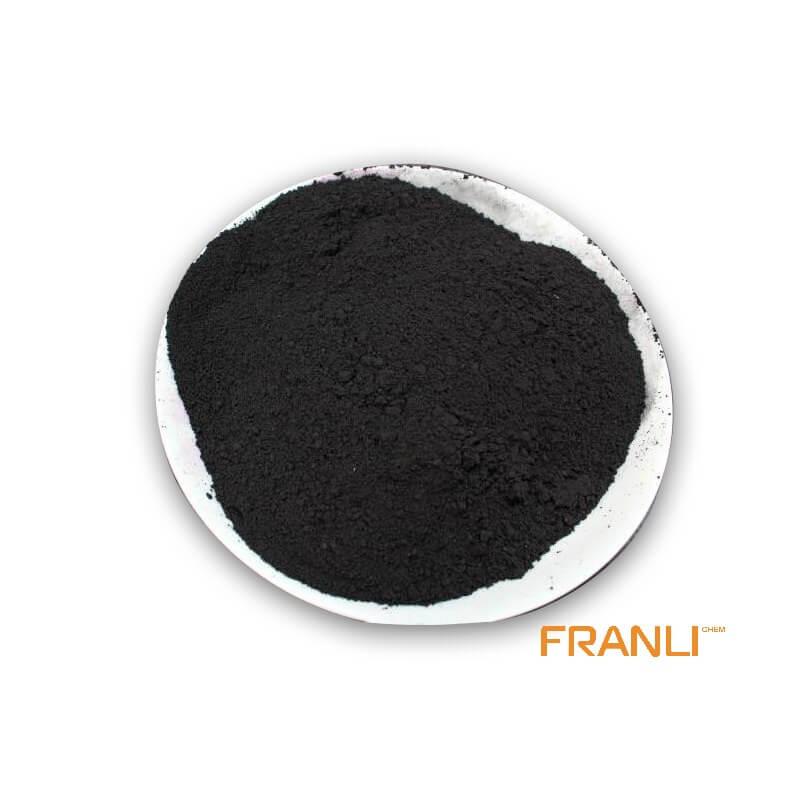

Graphite Powder
Size
1≥60%, etc
Package
25kg small bags into ton bags or ton bags
Features
High temperature resistance, conductivity and thermal conductivity, etc.
Application
As refractory material, conductive material and wear-resistant lubricating material, etc.
Graphite powder is a widely used industrial material, which is obtained from high-purity graphite after crushing, grinding, and screening. The classification of graphite powder is mainly based on the particle size, ranging from 50 mesh to 30000 mesh. The larger the mesh, the finer the particle size, and the higher the price.
Request a quoteGraphite is a naturally occurring mineral with unique lubricating properties, and the Franli graphite factory compares the lubricating properties of colloidal graphite powder and flake graphite. However, not all forms of graphite offer the same level of lubricity. We need to perform a rough analysis of these two graphite morphologies.

By comparison of graphite particles
(1) Colloidal graphite powder is a nanometer-sized graphite particle suspended in a liquid medium, usually water or oil. It is made by grinding large graphite flakes into tiny particles and then dispersing them in a liquid reagent. Due to the small particle size, colloidal graphite powder can penetrate into tight spaces and provide excellent lubrication. Colloidal graphite powder can also be used as a dry lubricant, applied to surfaces to form a smooth film.
(2) Flake graphite is a larger form of graphite commonly used for lubrication applications. Flake graphite is a naturally crystalline form of graphite found in large deposits around the world. It consists of layers of graphene sheets that slide easily against each other to form a low-friction surface. However, compared to colloidal graphite powder, flake graphite has a limited ability to penetrate tight spaces and provide a uniform coating.
(3) Summary: colloidal graphite powder has significant advantages over flake graphite. The small size of colloidal graphite particles allows it to penetrate into tight spaces, forming a uniform coating and reducing friction between surfaces. In addition, it can also be used as a dry lubricant, making it a versatile lubricant material.
Advantages of colloidal graphite powder
(1) A film is formed on the surface of metal parts. The film acts as a lubricant layer, preventing direct contact between metal surfaces and reducing friction and wear. In addition, colloidal graphite powder has a low coefficient of friction, making it an efficient lubricant that can extend the service life of machinery and improve the efficiency of metalworking processes.
(2) Flake graphite is composed of thin and flat sheets, and its morphology is different from colloidal graphite powder. Fabricated graphite flakes can easily slide between the surfaces of metal parts, reducing friction and wear in a manner similar to colloidal graphite powder. In addition, flake graphite has excellent thermal and electrical conductivity, making it an ideal material for applications such as metal casting and battery anode production.
Comparison of colloidal graphite powder and flake graphite
(1) Colloidal graphite powder refers to a kind of graphite that is finely ground and dispersed in water to form a colloidal suspension. It differs from flake graphite, which has a distinctly different morphology because it consists of thin, flat graphite flakes. Colloidal graphite powder has unique lubricating properties that make it an ideal material for certain metalworking processes.
(2) In terms of lubricity, due to the small size of graphite particles, this allows them to fill small gaps and reduce friction. In addition, the water-based basis of colloidal graphite is easy to apply and clean. In contrast, flake graphite is a naturally occurring mineral that is mined and processed into flakes. Flake graphite generally has a larger particle size than colloidal graphite and is less effective at reducing friction. However, it is often used in applications that require its other properties, such as electrical conductivity or thermal resistance.
Both forms of graphite exhibit excellent lubricating properties and are widely used in a variety of industrial applications. However, colloidal graphite powder is often a better choice because of its high level of lubricity and ease of use. This highlights the importance of choosing the right type of graphite for the job. However, flake graphite may be preferred in applications that require its other properties. When selecting a graphite lubricant, it is important to consider the specific needs of the application and make the choice accordingly.



